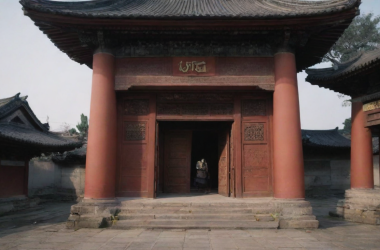“Convenience Store: The Brightest Light in the City,” “The Subway ‘At My Will’,” “Pocket Park: More Than a Resting Place,” and “Evolving Industrial Parks” are a four-part series planned to express love for the city. Each episode focuses on a unique place or phenomenon in urban life, interpreting from a personal perspective the emotional and economic dynamics associated with the city. The emotional dependence and cognition of people from different generations toward these places form the emotional thread of the series.
Since March 2023, the series has been released sequentially, revealing the subway’s critical role in enhancing urban development and facilitating the commute of citizens. By the end of the year, the mileage of urban rail transit in mainland China reached 10,165.7 kilometers, with 55 cities having established subway networks; among them, 8 cities exceed 500 kilometers. The subway has become an inseparable part of many people’s urban lives.
As a new lifeline of urban civilization, the subway has attracted widespread social attention. A university freshman and subway video blogger, Cai Shengyue, with tens of thousands of followers and subway enthusiasts, describes his impression of the subway as “beautiful”. He discovered that the cultural and artistic design of subway stations is not only an important part of the city’s public space but also a hot topic and source of nostalgia in his video comments section.
Sun Juan, an urban planning expert, also shared her views on the subway, saying it is not only a “reliable” and “low-carbon” mode of transportation but also a carrier of the city’s festivals and cultural atmosphere. She emphasized that particularly the post-90s generation is willing to embrace the subway. This low-carbon travel not only indicates the importance of the subway for the city but also reflects the attitude and expectations of the new generation towards urban lifestyle.
The subway, as an important part of urban life, has not only changed the commuting habits of citizens but also profoundly influenced the values and life choices of young people. Taking Shanghai as an example, analyses have shown that the average commuting distance for residents is about 9.5 kilometers, but it can increase to 14 kilometers for subway commuters. This reflects the superior efficacy and cost benefits of the subway, especially over longer commuting distances.
In cities with developed subway networks, young people increasingly tend to choose their residence and workplace based on the subway network, seeking a balance between work and home life. As urban functions overlap with subway stations, subway stations become more than just a means of transportation; they become destinations in themselves. The added cultural attributes allow citizens to enjoy cultural feasts while commuting, such as exhibitions held in subway stations, giving them both cultural and commuting functions.
Urban planning experts resonate with this and believe that combining the subway with the city’s cultural features is an important direction for urban development. By effectively integrating different functions of subway stations and planning the organic integration of subway stations with surrounding urban functions, the expectation of “reaching the destination immediately after leaving the station” can be realized.
Since Beijing opened its first subway line in 1969, mainland China has seen subway systems launched in 55 cities, with 8 of those cities having more than 500 kilometers of operational track. With the construction of subway networks, the built-up areas of cities have also seen significant growth, tightening the connection between subways and cities.
Young people, when envisioning urban structures, no longer limit themselves to administrative divisions or surface roads, but are more accustomed to using subway network maps. They commonly refer to “going to a certain subway station” or “what facilities are near a subway station,” reflecting the subway’s growing central role in urban life. To adapt to the increasing influence of subways on urban layout, planners also need to update their planning concepts, making subway stations truly become urban transportation hubs.
In exploring the development and planning of metropolitan subway systems, experts emphasize the new trend in current subway construction. The construction model for subways in mega-cities should shift from focusing on expansion to prioritizing the quality of operations and services. Refined management has become a keyword of the new era.
Dean Sun Juan pointed out that the development of urban subways, especially the planning of subway stations and their surrounding urban functions, must focus on citizens, particularly paying attention to the needs and expectations of young people. This people-oriented planning approach can inject vitality and innovative functions into urban development. The ideal state is to have each line and each station tell its own story and showcase unique characteristics, attracting the interaction and flow of passengers.
The program “A Touch of Finance” which discusses the relationship between subways and people, and subways and cities, invited a group of guests with different backgrounds and professional knowledge. Through the perspective of young people and their professional backgrounds in urban planning, data research, and subway exploration, they engaged in in-depth discussions.
The guests invited to this program include:
• Sun Juan, Dean of the Shanghai Branch of the China Academy of Urban Planning and Design, focusing on urban operation strategies and development planning.
• Shen Congle, editor-in-chief of Yicai Research Institute for New First-Tier Cities, focusing on financial data and urban research.
• Cai Shengyue, known as “Ougana” on Bilibili, a subway video blogger and a passionate university freshman.






